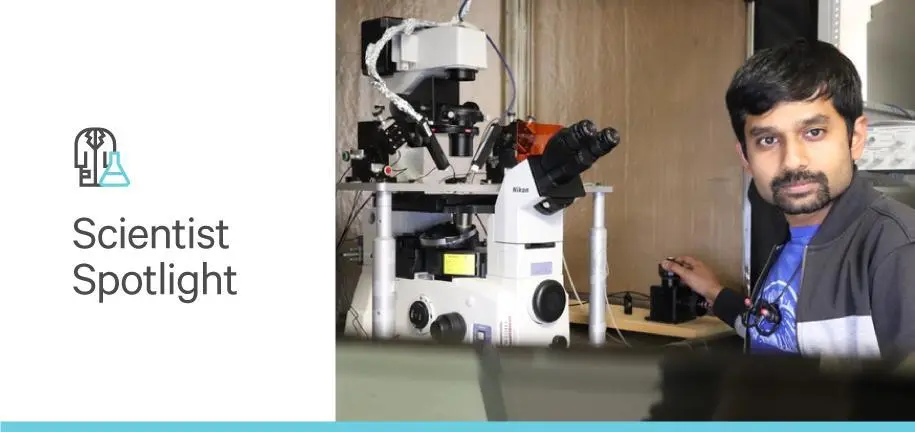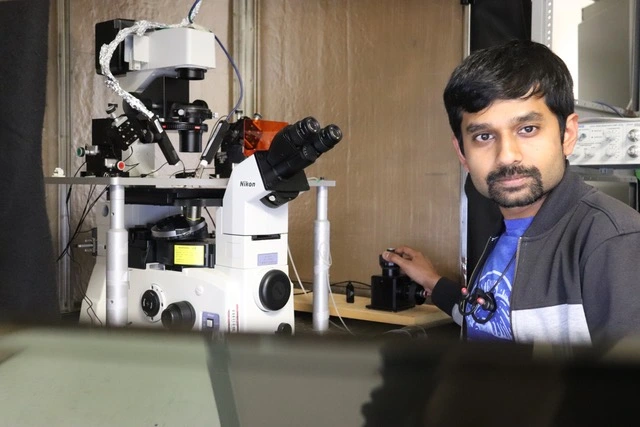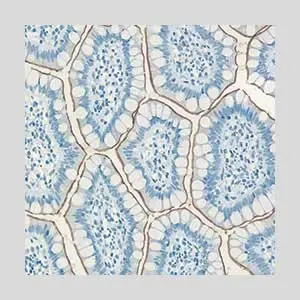
Vector Laboratories is closed for the President’s Day on Monday, February 19th. We will be back in the office on Tuesday, February 20th.
We will respond to emails upon our return. Have a wonderful day.
Menu
Vector Laboratories is closed for the President’s Day on Monday, February 19th. We will be back in the office on Tuesday, February 20th.
We will respond to emails upon our return. Have a wonderful day.


I’ve been nurtured by a series of mentors that I’ve been incredibly lucky to meet since the fourth grade. And when I say mentors, I mean all my science teachers who recognized my inclination toward science and encouraged me. They would prod me to do a little bit more until it got to the point where they couldn’t hold me down—I couldn’t learn things fast enough. I had well-educated, thoughtful teachers at every step of the way who encouraged me to go just a little bit further. For example, I attended a Catholic elementary school in Oregon where my first significant mentor was a nun who not only taught science but also progressively taught evolution. And while I didn’t recognize the significance of that at the time, I realize now just how unusual and fortunate that was.
My high school psychology class had a teacher with a PhD. I have no idea what possessed her to teach high school in a public school district, but she did, and I was glad for that. Her background included studying dopamine homeostasis, specifically treatments for schizophrenia. At that time, I didn’t know what neuroscience or neurobiology was, but she saw and encouraged my interest. I soon recognized that everything that I was doing, everything that I was interested in, fit very neatly into that category. By the time I finished high school, I was dead set on neuroscience, and I still follow that path, studying dopamine homeostasis in both the brain and the peripheral immune system, currently in the context of Parkinson’s disease (PD).
I had a professor at UF for a summer course who taught us how to dissect scientific literature. We met three hours a day, five days a week, and read ten papers each week. Until then, literature seemed too intimidating for me. Her systematic teaching methods enabled me to access and understand the world of scientific knowledge. I learned that scientific papers were not made to be read from start to finish or to be immediately processed. Today, I rely on three read-throughs to understand a paper: I note the abbreviations in the margins in the first round, rely on all those letter and number combinations in the second round to start making sense of it, and then analyze and annotate the figures so that they’ll tell their own story.
My PhD mentor told me from the get-go: “I expect my students to publish one paper a year for their entire graduate education.” Since I had no idea how realistic (or unrealistic) that was, I didn’t question it, kept my eye on that number, and did just that. I realize now that was more than what most mentors expected. But in retrospect, I’m grateful for that. Because every chapter of my thesis was a published paper, it simplified putting my thesis together with a lot of copying, pasting, and formatting.
My goal has been and continues to be to stay in academia to be an independent principal investigator (PI) with an independent lab and students. Because my project is so heavily involved with primary samples from PD patients, the only place I can do it is where I have access to those patient samples. The only places that can rival the clinical-basic science teamwork we have here at UF Gainesville are Texas and the Netherlands. That gives me a strong rationale for wanting to stay here, and with so much work to be done with the potential for a myriad of spin-offs, there is room for me to continue this line of investigation.
It turns out that peripheral immune cells express the same protein markers that are expressed by the dopamine neurons that are affected in the brains of PD patients. As these neurons degenerate in a person with PD, immune cells in the blood change their expression of tyrosine hydroxylase and dopamine transporter proteins. This paves the way to identify potential biomarkers, monitor treatment efficacy, and develop new treatment therapeutics.
Whenever you open a new chapter in a disease-related field, there’s resistance to overcome persuading the reviewers that what you’re studying is real, that it’s worth studying, and that it has implications for human disease. For example, we faced quite the uphill battle to get our paper published earlier this year in Nature’s npj Parkinson’s Disease. Since it’s been published, we have been getting offers for collaboration and support left, right, and center. But until then, it was crickets. There seems to be an activation energy threshold that must be passed before that kind of support becomes feasible. Up to this point, we’ve been working with local and private foundation grants. That being said, I’m always surprised and gratified that we’ve been able to put five publications out so far, even without a major grant for this line of research.
We took a different approach to start. Typically, neurodegenerative disease research starts in an animal model with an aspect of the disease that it reproduces faithfully. Researchers characterize the aspect and find an effective treatment for it in the animal species. Unfortunately, when one tries to transfer this treatment to humans, it often doesn’t work as planned. To avoid that pitfall, we started with human subjects to identify the phenomenon, verified that it was real and happening in the patient population of interest, and then worked backward to two separate, validated mouse models. We have been able to look at potential communications between the dopamine regions of the brain and its neurons that are dying in PD, as well as connections between those regions and the peripheral immune system. This helps us be doubly sure that what we see is due to the brain, the periphery, or both. Now, we’re figuring out the mechanism that links the loss of dopamine neurons to changes in dopaminergic markers on the peripheral immune cell and the best way to translate this into PD patients in the clinic.
We found blood-based markers that are traditionally associated with dopamine neurons, cells that are dying in the brains of PD patients. These markers were thought to only exist in the central nervous system (CNS), the brain, and certain neuronal populations. It turns out that peripheral immune cells (specifically monocytes) express the entire set of dopamine signaling machinery. In PD patients, these markers are dramatically upregulated and increased at the time of diagnosis but fall back toward baseline levels after successful treatment. We identified a potential blood-based biomarker for PD that can be routinely tested. To get this to market, we will need to meet FDA regulatory requirements to make sure that it’s safe and can reliably and accurately measure the biomarker. Performing all those steps usually take about five years.
My original undergraduate lab mentor and principal investigator (PI) at UF was instrumental in keeping me on track. He had this way of getting me to see what was happening versus what I was hoping would happen. My undergraduate education was affected by an illness that progressively worsened and took a long time to diagnose, with doctors who repeatedly told me that it would resolve in just two weeks. My mentor said, “Adithya, you’ve been trying this approach for four years, and it hasn’t worked. What makes you think you’re going to get better in the next two weeks?” With his support, I took a two-year leave of absence from my undergraduate program to figure out my health issues. By leaning into my scientific inclinations, I was able to self-diagnose the condition as autoimmune disease. I found the right specialist, confirmed the diagnosis, and got treatment. Within a year, I was back on my feet. But it took a scientist encouraging me to think like a scientist to make that happen.






Stay in the Loop. Join Our Online Community
Together we breakthroughTM

©Vector Laboratories, Inc. 2024 All Rights Reserved.